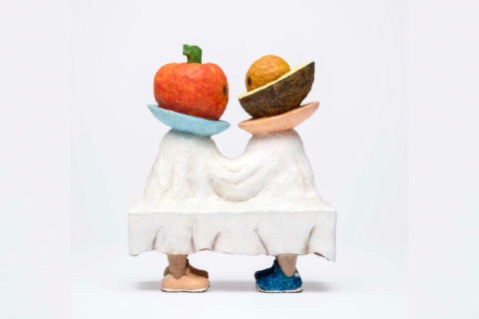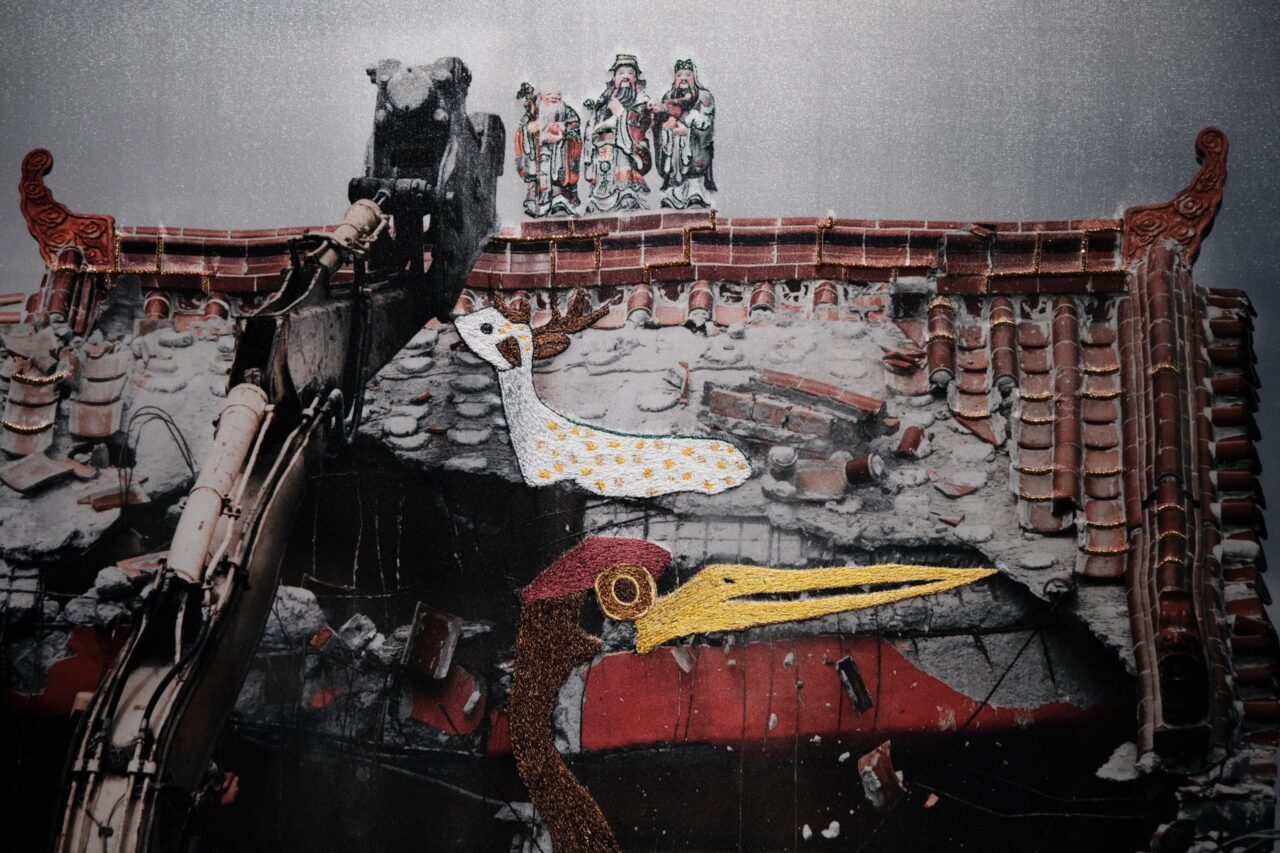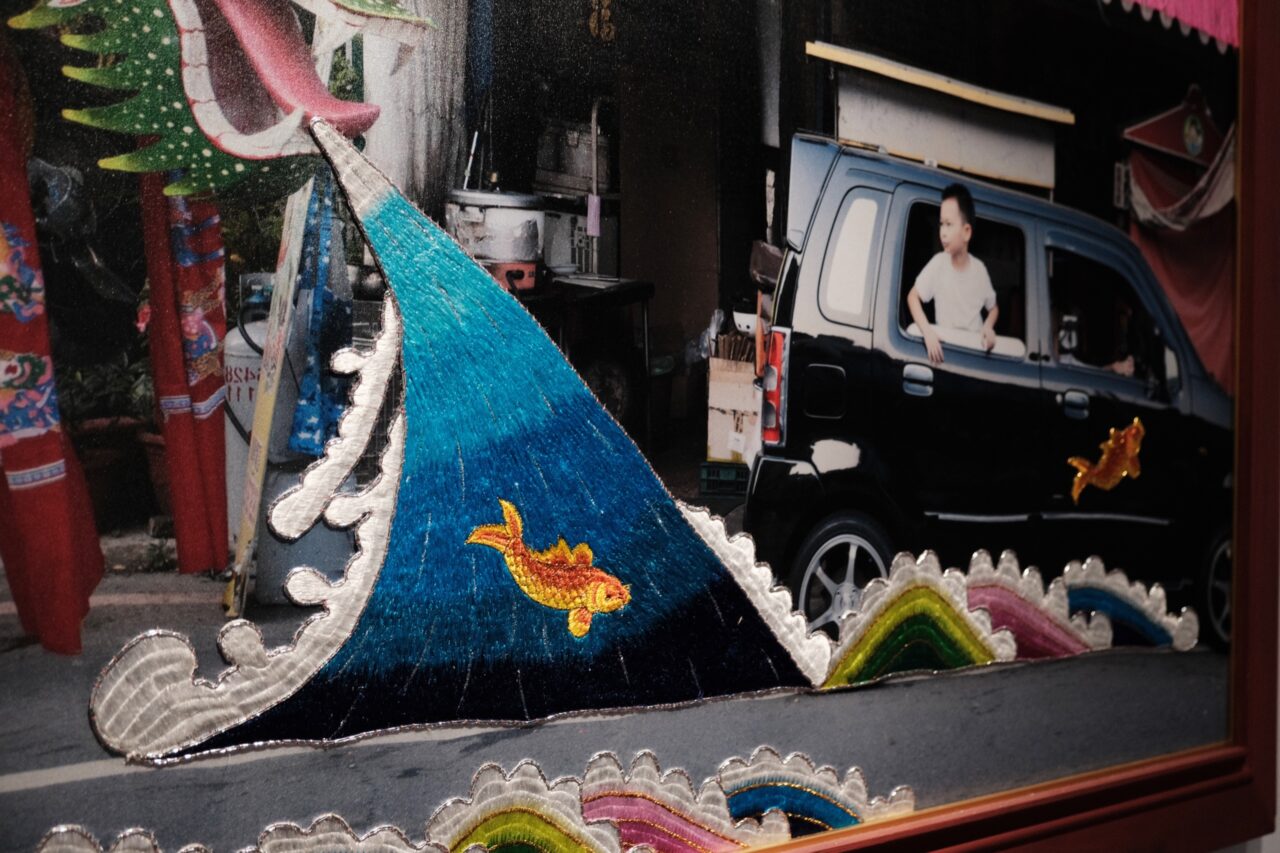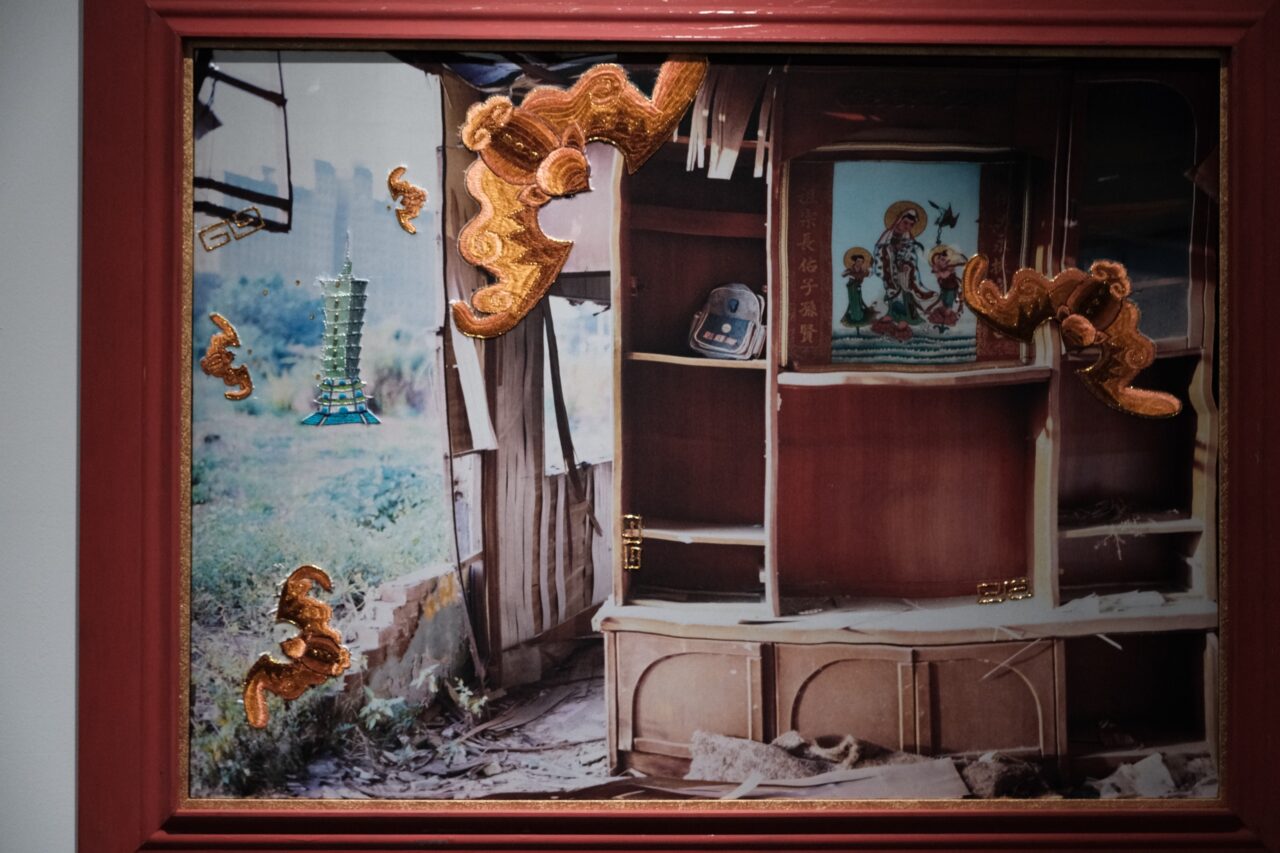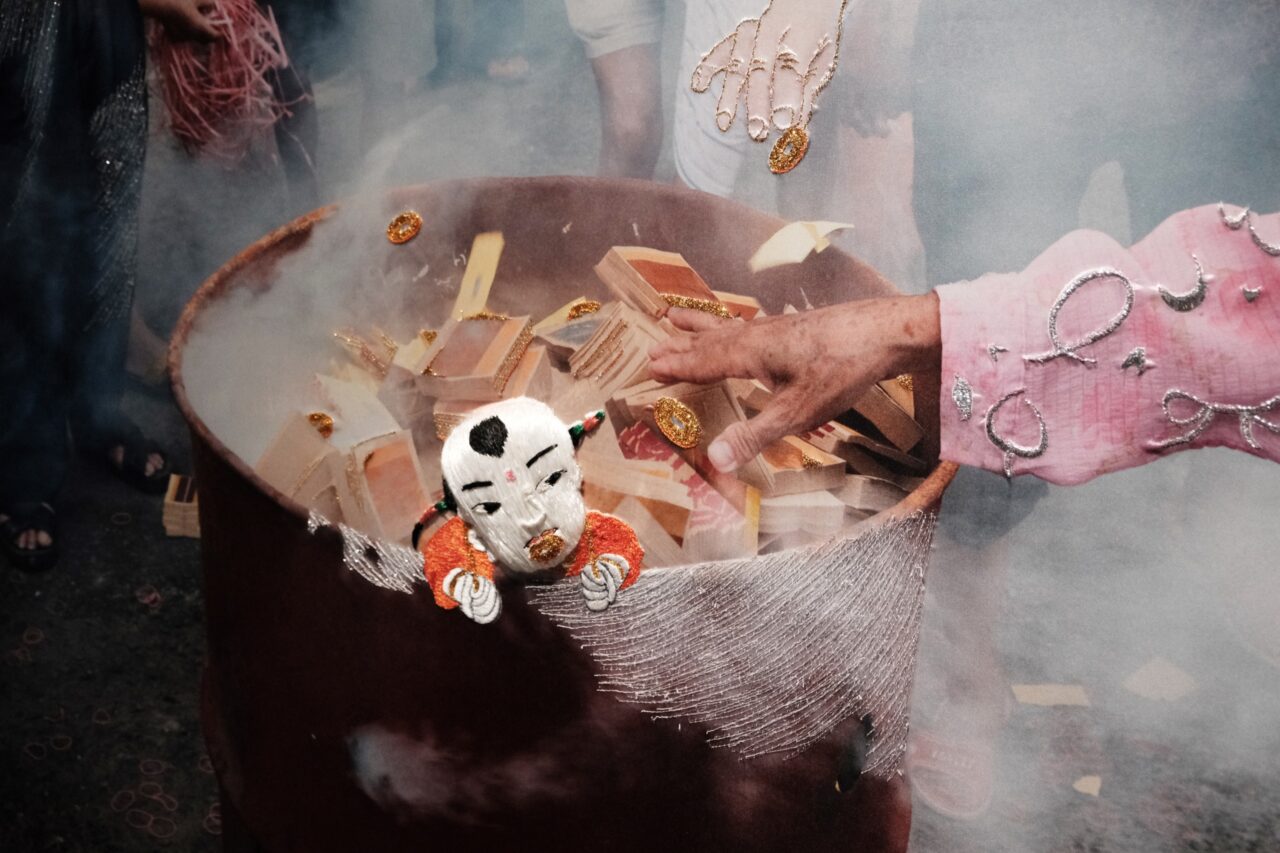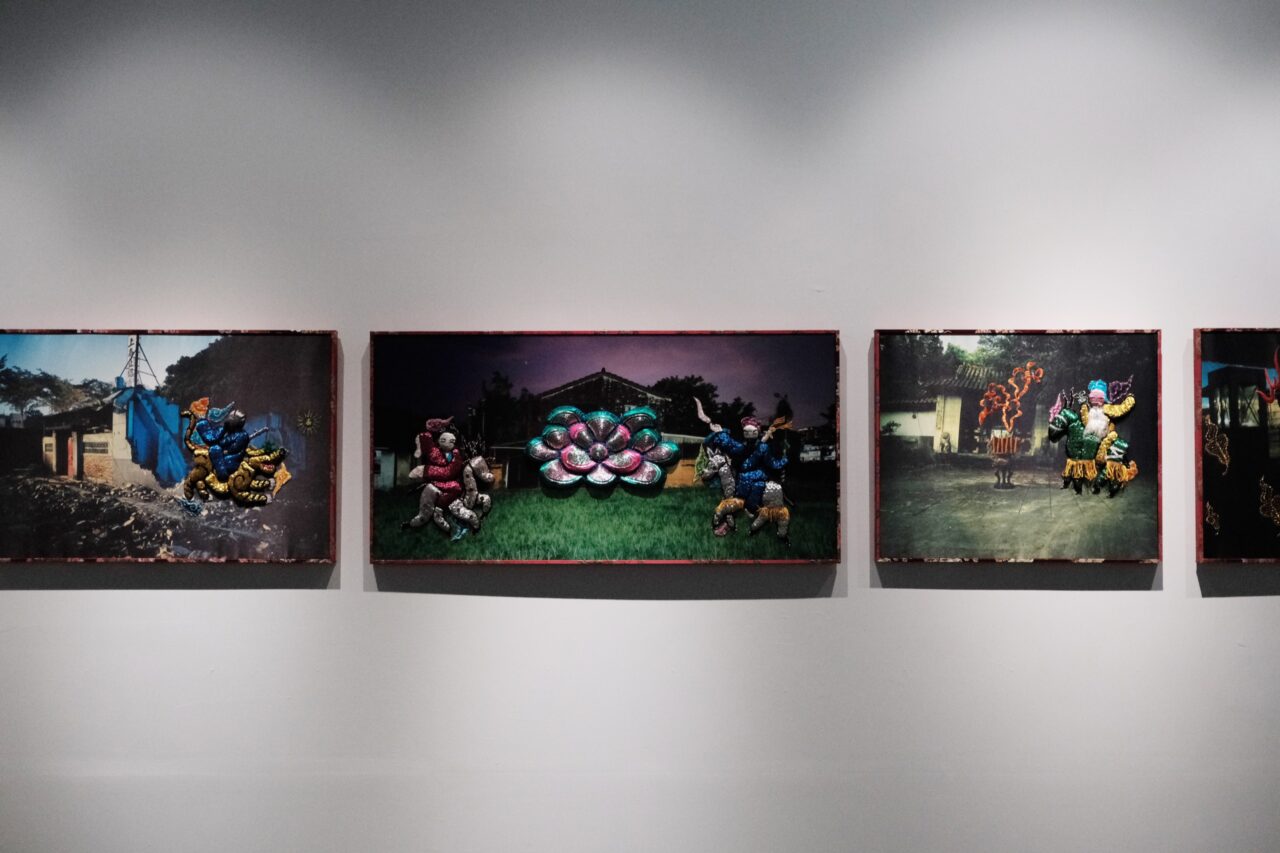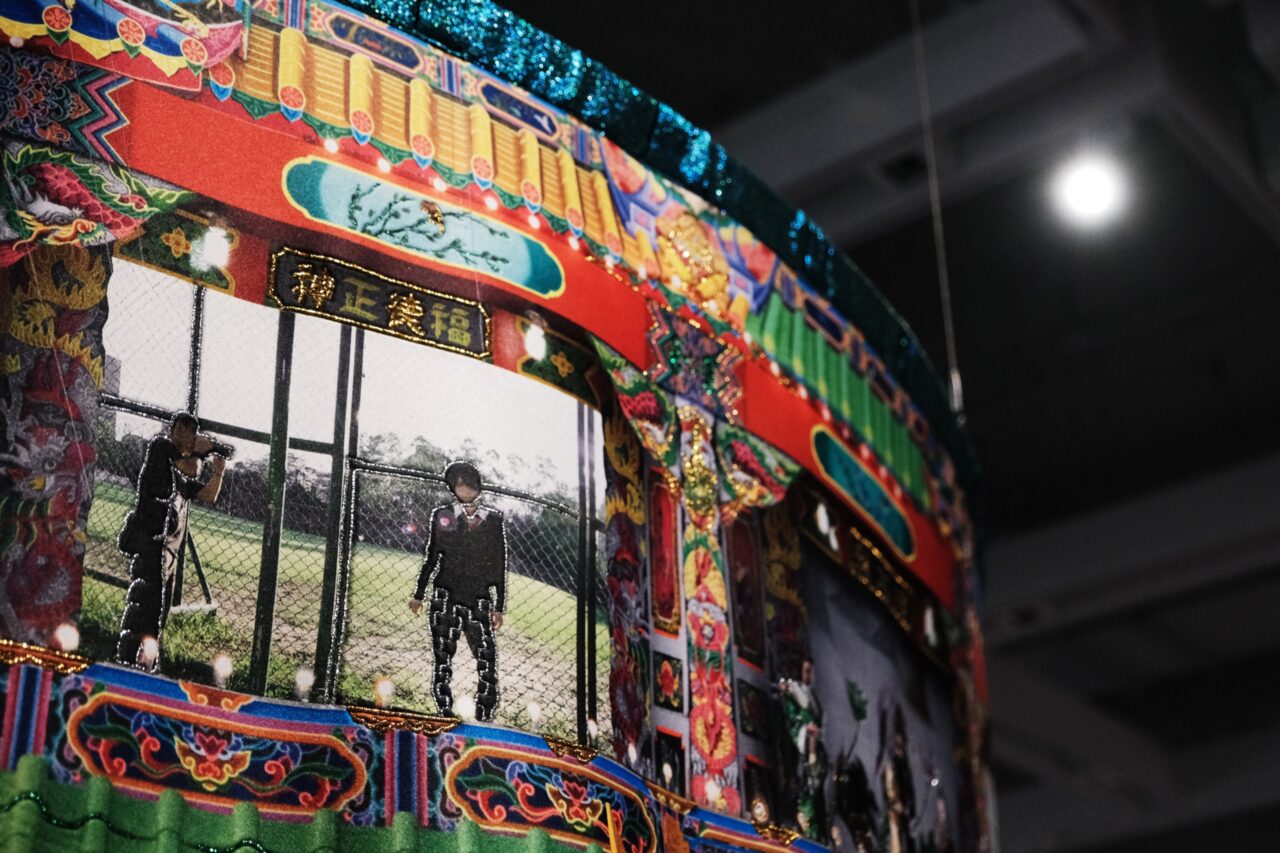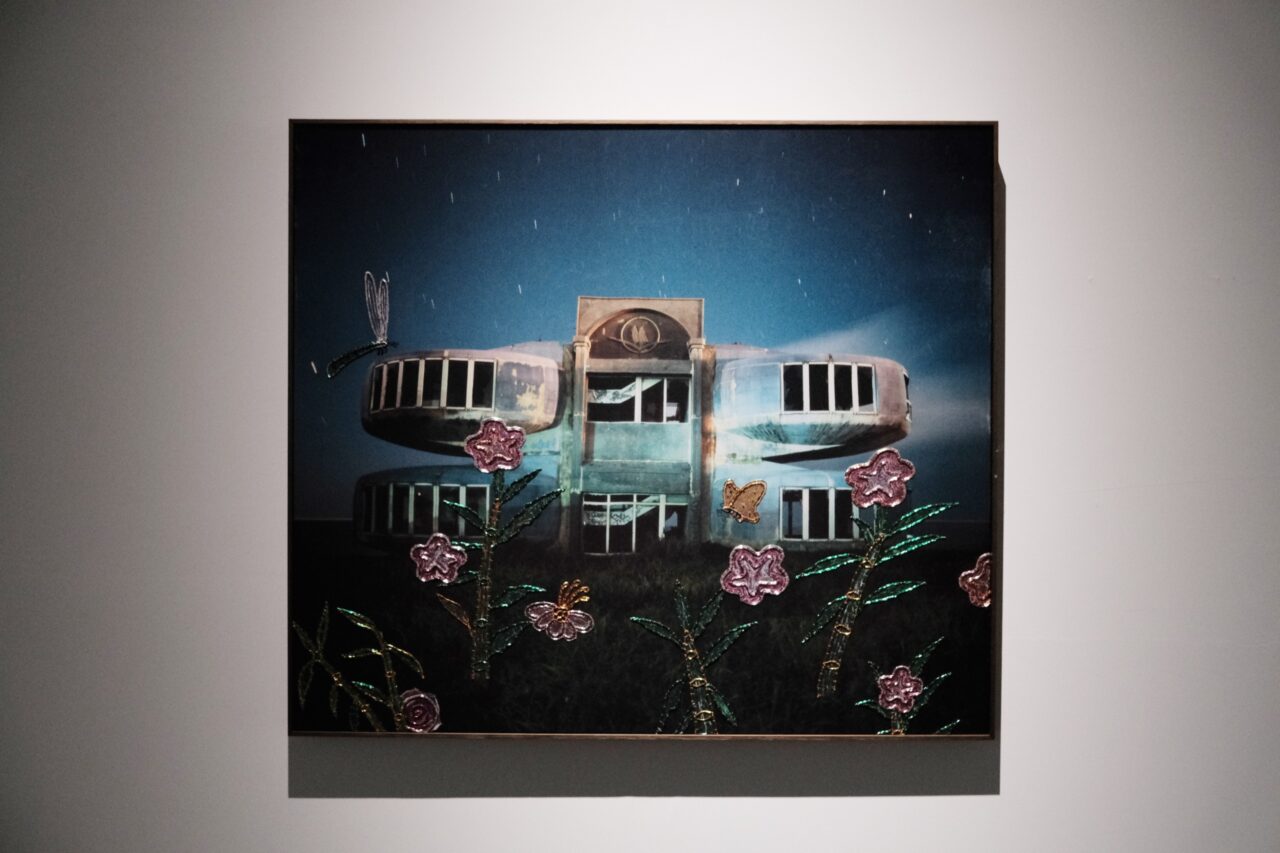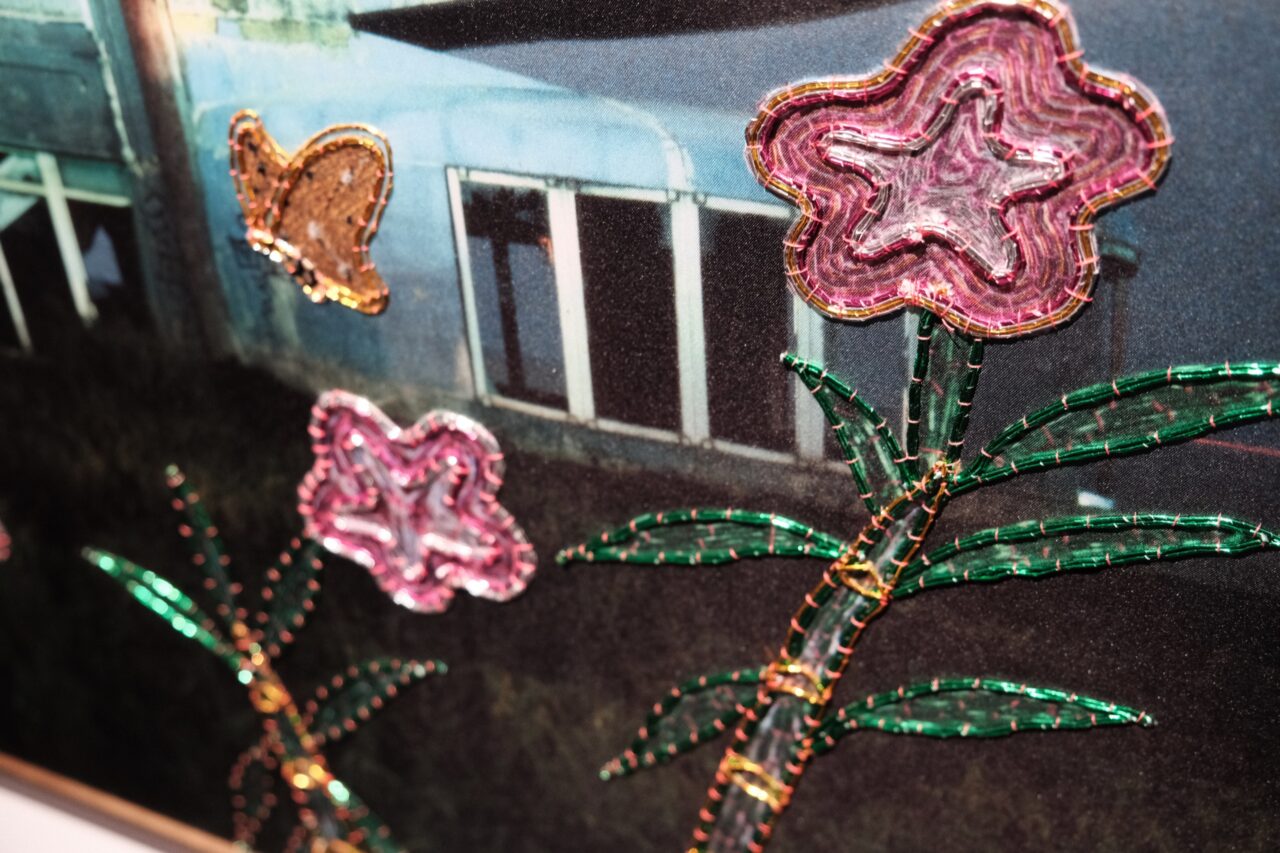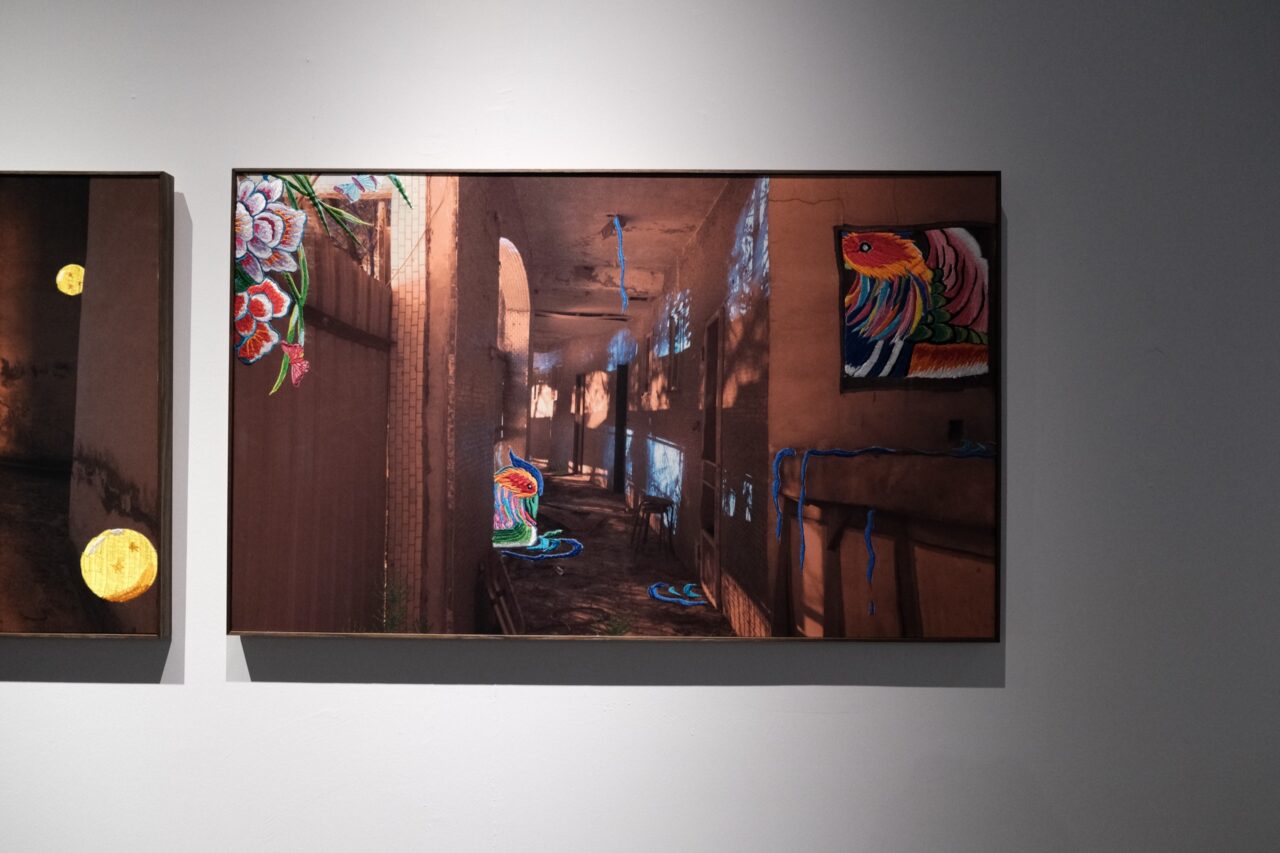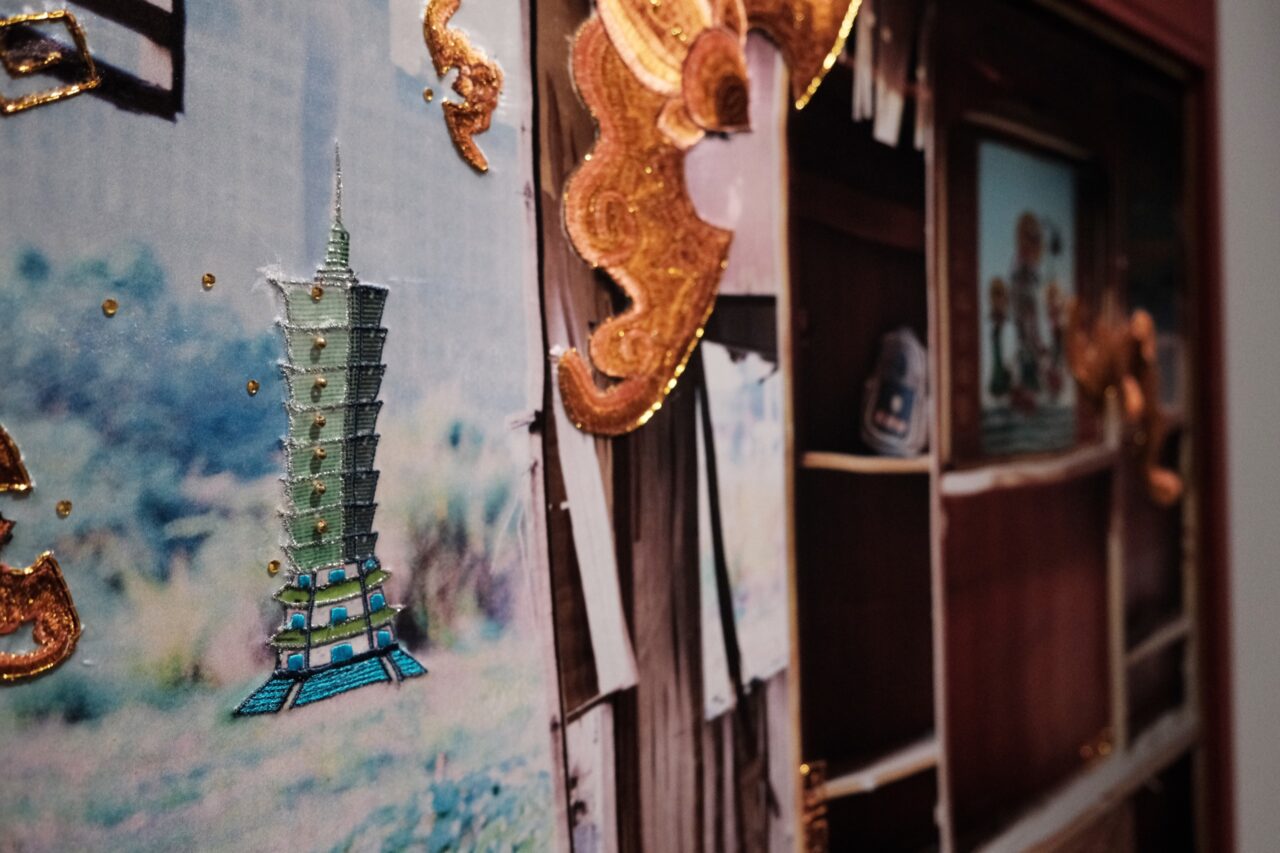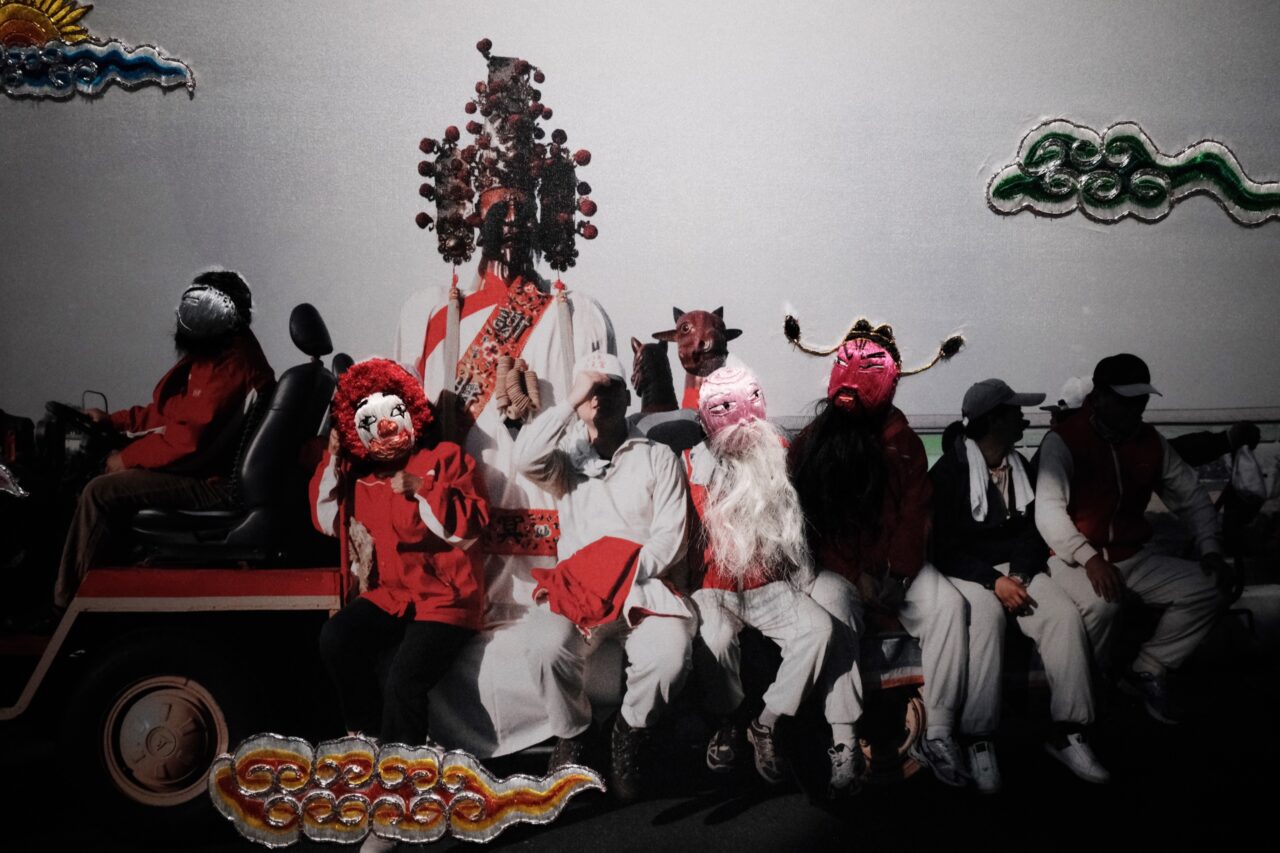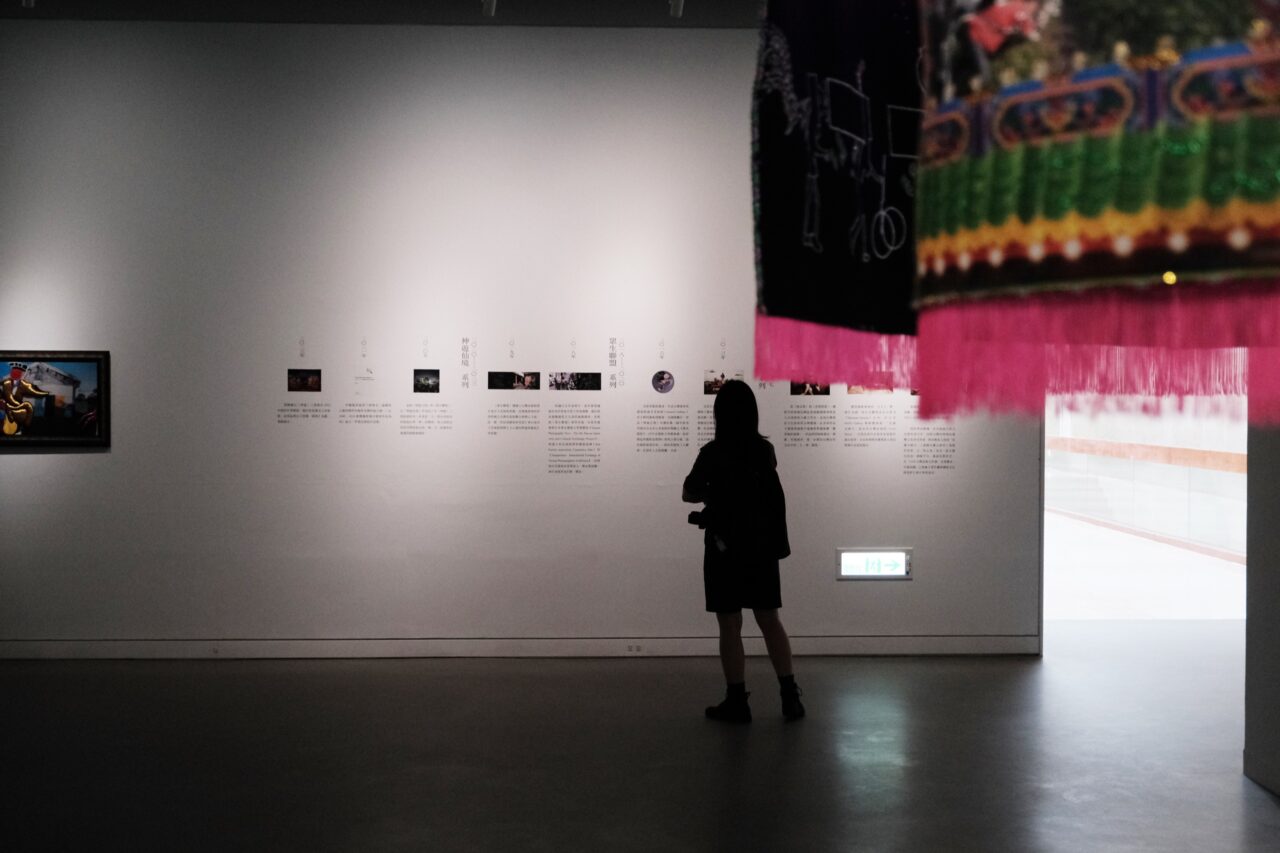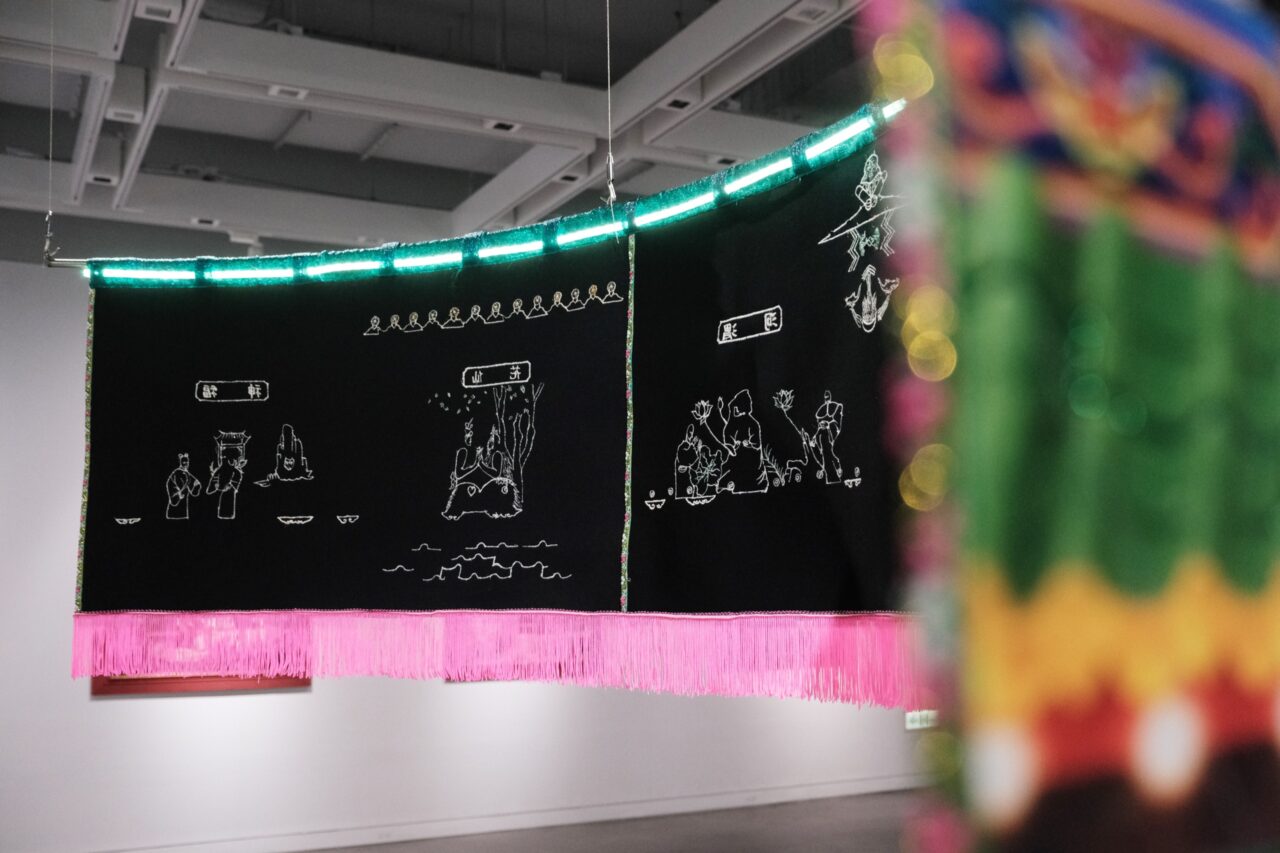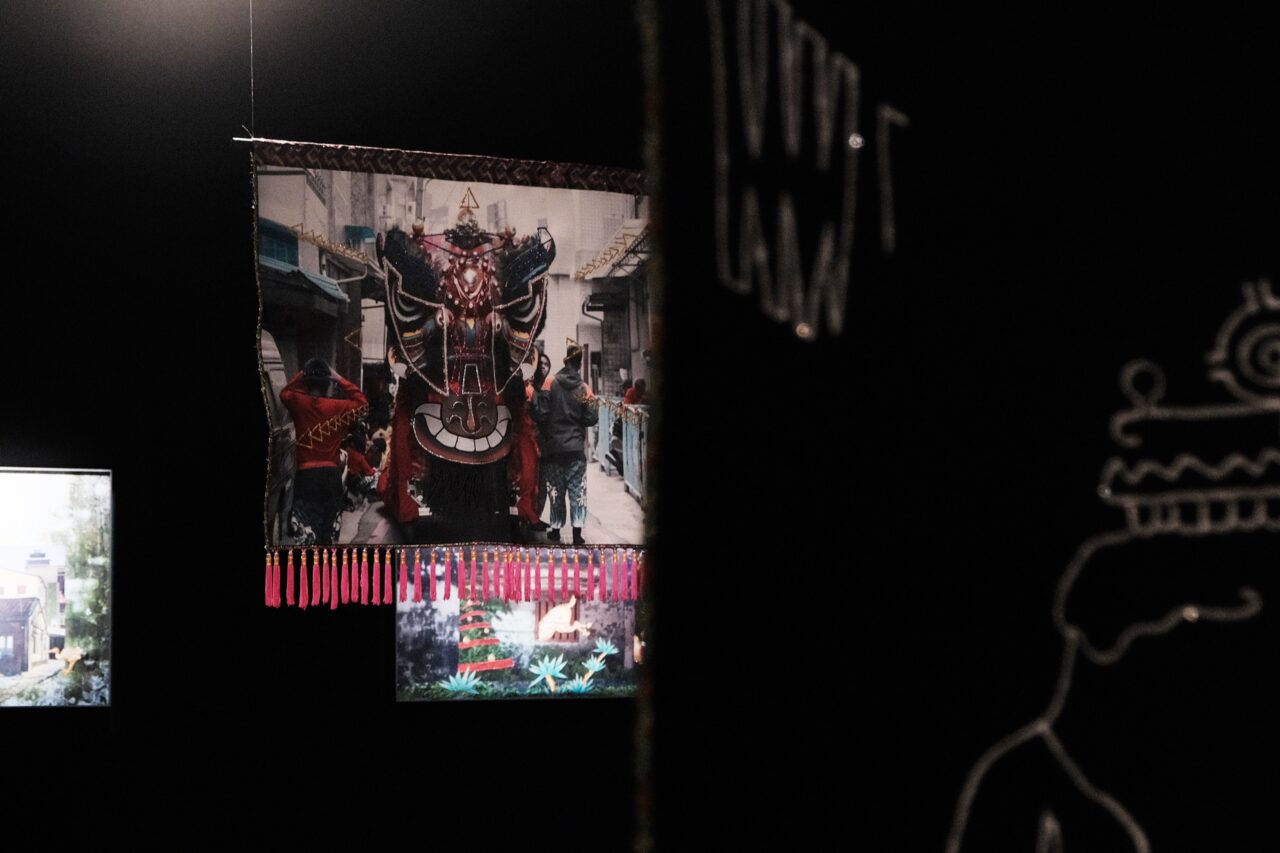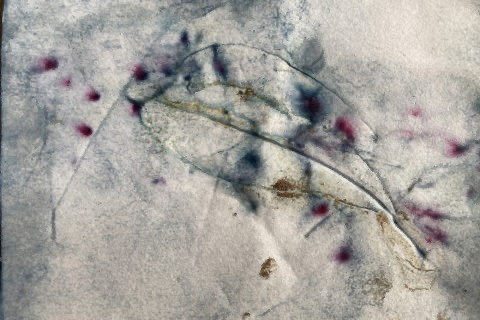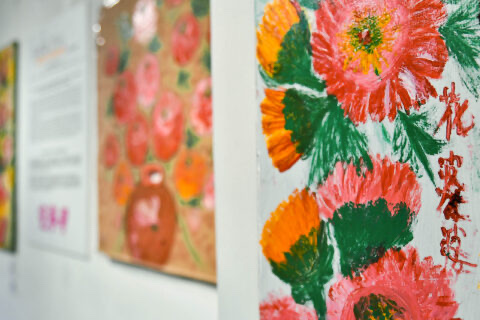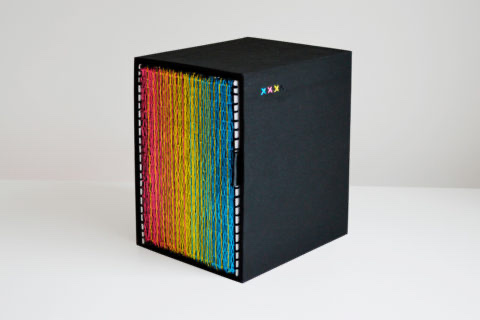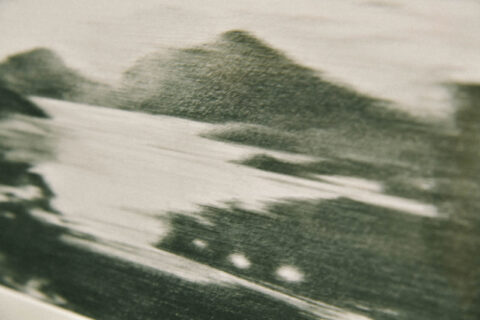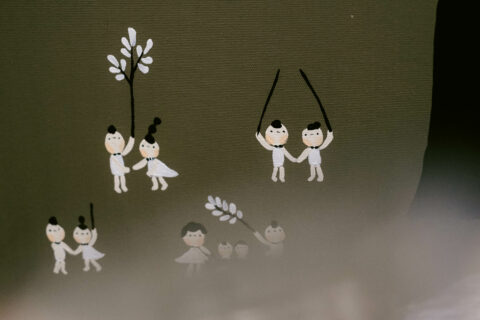現代人常說破舊立新,所以殘舊的建築物、古老的傳統信仰逐漸地被淘汰?時間流逝,空間被迫自然地老去或跟隨周圍環境而變遷,我在想從前的信仰會不會也慢慢地消失?還是越是進步的城市,我們就越需要信仰的依靠?或我們根本沒法在空間、人物之中放棄對信仰的依賴,畢竟信仰是一種力量。
In modern society, there is often an emphasis on breaking away from the old to create something new. So, is that why aging buildings and traditional beliefs are gradually being phased out? As time passes, physical spaces are inevitably subjected to the natural process of deterioration or undergo transformations influenced by their surroundings. I wonder: if past beliefs will also gradually fade away. Or, is it that the more progressive a city becomes, the greater our need for faith as a source of solace and support? Perhaps we simply cannot let go of our reliance on faith, for faith holds a profound power in our lives.
「我在做的是當代,但我接觸的這個東西是傳統,所以有沒有可能這兩個東西是可以加在一起的。」台灣藝術家邱國峻一直以攝影為創作媒介,這十年來由「神遊之境」延伸創作到「眾生聯盟」、「神遊仙境」共三個系列。他的多媒體攝影作品是以台灣南部廟宇文化活動及民生作為主題,這些作品相繼獲得義大利都靈攝影節(FOTOGRAFI A TORINO 2019)、日本東京大學,2019年台/日藝術交流計畫邀。在最新的「眾生聯盟」系列中,他把鏡頭從人物轉向台灣建築,讓神明的力量重新喚醒空間,讓我們在作品中看見力量。
“What I am engaged in is contemporary, but what I am exposed to is tradition. So is it possible for these two elements to be combined?” Photography has always been the primary medium of creation for Taiwanese artist Chiu Kuo-Chun. Over the past decade, his creative journey has evolved from Land of Deities to Paths of Convergence and finally to The Believers, encompassing three distinct series of works. His multimedia photography works revolve around the theme of temple culture and activities in southern Taiwan. These works have garnered recognition and invitations from prestigious events and programs. For instance, his artworks were showcased at the Fotografi a Torino 2019, as well as the University of Tokyo in Japan. He also participated in the 2019 Taiwan/Japan Art Exchange Program. In his most recent collection, The Believers, Chiu shifts his focus from individuals to architecture in Taiwan, reawakening the power of deities within these spaces and allowing us to witness that power in his artworks.
90年代在台灣的攝影作品都以黑白、報導攝影為主。跨領域結合彩色攝影作品,並不受到重視,邱國峻當時在外國學習回台灣,加入廣告界後,反而傾向展示跨領域彩色攝影作品。不管鏡頭對焦在人物或是空間,邱國峻這十年的創作最大的特色是把彩色照片印刷在布上,再跟台南傳統宗教刺繡師傅合作在平面輸出的「照片」上,繡出立體的「神明」,這些傳統形象的「神明」在藝術家包裝之下,有了新的姿態,「信仰」像得到新的註釋。「台灣有很多神像,他穿的衣服、稱為『神衣』,『神衣』上有很華麗的刺繡, 你會發現這些樸實的木雕神像只要穿上『神衣』後,他就是神了。」
「只要披上刺繡神衣,你會覺得他就有神力了,這就開始有不一樣的『東西』。其實他本來是雕像也好或甚麼也好, 對我來說刺繡做出來的衣服、衣飾,像把主體武裝起來讓他看來更強大。」那些金絲銀線,那些立體的刺繡,把邱國峻平面照片中的人物加上了「力量」,給予人們相信的力量,讓人相信那照片中的人物充滿力量,這就是「信仰」。
During the 1990s, black and white documentary photography dominated the photography scene in Taiwan. However, Chiu, who had returned to Taiwan after studying abroad and working in the advertising industry, chose to pursue a different path. He ventured into interdisciplinary color photography, a direction that wasn’t widely embraced during that time. Chiu’s unique approach involved printing his photographs on fabric and collaborating with traditional religious embroidery masters from Tainan to embroider three-dimensional deities onto the images. Through Chiu’s lens and the skilled craftsmanship of the embroidery masters, the two-dimensional photographs are transformed into dynamic and intricate pieces, presenting a fresh interpretation of traditional deities and giving faith a new dimension. Chiu explains, “In Taiwan, there are many divine statues, and they wear garments called ‘holy robes’ which are intricately embroidered. These simple wooden carved statues become divine once they are dressed in holy robes.”
“Once the statue is adorned with the embroidered holy robe, a palpable divine power can be sensed, giving birth to a new entity altogether. Whether it is a statue or any other form, the inclusion of embroidered garments and adornments serves as a means of empowering the subject, making them appear more powerful.” Those golden and silver threads, as well as three-dimensional embroidery bestow a sense of power upon the subjects captured in Chiu’s two-dimensional photographs. It imparts a belief in the strength of these individuals, instilling faith in their abilities.
城鄉差距,鄉鎮留下了沒有清拆的舊電影院,年輕人離開家鄉,留下破舊的房子,邱國峻拍下這些他稱為「失能的空間」,再請傳統宗教刺繡師在輸出空間的布上繡出華麗、生動的圖案。「我把信仰這一個元素,轉到這樣的空間裡,所以在我的刺繡裡面,其實我是想在這樣的地方再給它一種力量、一種神力、一種祝福,一方面你會說『哇,那個很破的房子』,可是它加入了金碧輝煌的刺繡後,這樣的意境好像又被召喚回來了,好像已死掉、離開的又被復甦了。」失能的空間原來還可以這樣呈現,這樣壯麗又莊嚴地再次展現,傳統宗教刺繡作為當代藝術品還是擁有神力的「力量」。
或許,我們心中對城市、對生活都需要有這樣的「信仰」,我試著用華麗又傳統的刺繡填滿那無能為力,親手將祝福,送給這地、這人及我,召喚復甦的美學。
The disparity between urban and rural areas has resulted in many young people leaving their hometowns, leaving behind old houses and dilapidated movie theaters. Chiu captures these spaces, which he refers to as “disabled spaces,” and then collaborates with traditional religious embroidery masters to embroider elaborate and vivid patterns onto the fabric of his photographs. “I bring the element of faith into these spaces. Through embroidery, a sense of power, a divine energy, and blessings are bestowed upon. You might say, ‘Wow, that house is broken down,’ but once the resplendent embroidery is added, the once forgotten place is summoned back to life.” Traditional religious embroidery, when incorporated into contemporary artworks, brings back to life the disabled spaces in such a magnificent and dignified manner, imbuing them with a profound divine power.
Perhaps we all need such “faith” in our hearts when it comes to the city and life itself. I endeavor to fill the void of powerlessness with traditional embroidery. With my own hands, I bestow blessings upon the land, the people, and myself, invoking a revival of aesthetics.
